The 1922 Peace Silver Dollar’s value ranges from $18-$50 for circulated coins to thousands for high-grade specimens. The Philadelphia (no mint mark) version is most common, while Denver “D” and San Francisco “S” mint marks command premium prices, especially in mint state condition. An MS67+ 1922-D sold for $36,000, while an MS66 1922-S reached $16,000. Rare VAM errors like doubled leaves, die breaks, and repunched mint marks can significantly increase value, with some worth $1,000+ in high grades. High relief versions are rarer than low relief. To determine value, check the mint mark above the eagle’s wings, assess condition, examine for errors, and consult coin experts for accurate appraisal.
Your old 1922 Peace Dollar sitting in a drawer could be worth anywhere from $20 to $36,000 depending on three critical factors: where it was minted, its condition, and whether it carries valuable errors. While most circulated examples trade near silver melt value around $18-$50, certain mint marks, striking varieties, and grade combinations transform these common coins into serious collector pieces that command premium prices at auction.
Understanding the Three Mint Mark Variations
The United States Mint produced 1922 Peace Dollars at three facilities, and identifying which facility struck your coin is the first step in determining its value. The mint mark appears as a small letter on the reverse side, positioned just above the eagle’s tail feathers between the wings.
Philadelphia struck the highest number of 1922 Peace Dollars without any mint mark. With over 51 million produced, these represent the most common variety. Circulated examples in Good to Fine condition typically sell for $18-$25, essentially tracking silver content value. About Uncirculated specimens bring $40-$75, while certified Mint State coins start around $100 for MS-60 and climb rapidly with grade improvements. An MS-65 example averages $350-$500, but pristine MS-67 specimens have reached $7,000 at Heritage Auctions.
The Denver Mint marked its 15.06 million Peace Dollars with a small “D” mint mark. Despite the lower mintage compared to Philadelphia, circulated 1922-D coins trade for similar prices of $20-$30 in average worn condition. The real divergence appears in higher grades where Denver strikes become significantly more valuable. MS-64 examples command $200-$300, MS-65 pieces bring $800-$1,200, and top-tier MS-67+ specimens have sold for an astounding $36,000 according to PCGS price records.
San Francisco produced just 17.47 million coins marked with an “S” mint mark. These coins present a unique challenge for collectors because the San Francisco facility struggled with die pressure issues that resulted in weak strikes. Finding a sharply struck 1922-S in Mint State proves exceptionally difficult. Circulated examples trade for $34-$43, slightly higher than other mints due to this striking issue reducing the available pool of quality specimens. MS-64 examples reach $500-$700, while the rare MS-66 coins have achieved $16,000 at major auctions.
| Grade | Philadelphia (No Mark) | Denver (D) | San Francisco (S) |
|---|---|---|---|
| Good (G-4) | $18-$22 | $20-$25 | $22-$28 |
| Fine (F-12) | $22-$28 | $24-$30 | $28-$35 |
| AU-50 | $40-$55 | $45-$65 | $55-$75 |
| MS-60 | $95-$120 | $110-$140 | $140-$180 |
| MS-63 | $165-$220 | $180-$250 | $280-$380 |
| MS-65 | $350-$500 | $800-$1,200 | $1,800-$3,500 |
| MS-67 | $5,000-$7,000 | $20,000-$36,000 | $12,000-$16,000 |
High Relief versus Normal Relief Varieties
During 1922, the Mint transitioned from a high relief design to a normal relief version after discovering that the original artistic vision by Anthony de Francisci created production difficulties. The high relief coins required multiple strikes to bring up full details, slowing production and causing excessive die wear.
Distinguishing between these varieties requires examining the sunburst rays on the obverse side. Count the rays visible through the circular opening formed by Liberty’s neck and the inscription. High relief coins display two complete rays passing through this space, while normal relief versions show only one ray. This difference stems from the depth of the design elements and their relationship to the background field.
High relief 1922 Peace Dollars command substantial premiums over normal relief counterparts. While production numbers weren’t officially separated, numismatic researchers estimate only the earliest strikes of 1922 Philadelphia coins utilized high relief dies before the Mint switched to normal relief. A high relief example in MS-63 condition typically sells for $950-$1,400 compared to $165-$220 for the same grade in normal relief. MS-65 high relief specimens reach $3,500-$5,500, nearly ten times the value of normal relief equivalents.
Valuable VAM Varieties and Doubled Die Errors
The VAM classification system, developed by Leroy Van Allen and George Mallis, catalogs die varieties based on distinctive characteristics visible under magnification. Several 1922 Peace Dollar VAMs carry significant premiums for collectors who specialize in these varieties.
VAM-2A exhibits a CUD die break—a raised irregular bump caused by metal flowing into a crack in the die—positioned below the numeral “1” in the date on the reverse. This dramatic error appears as a blob of extra metal and can add $75-$150 to the coin’s base value in circulated grades, with premium multipliers increasing in Mint State.
VAM-3 features doubled leaves on the olive branch held by the eagle on the reverse. Close examination reveals a distinct shadow or doubling on several leaves where the die shifted slightly between hub impressions during manufacturing. About Uncirculated examples of this variety sell for $120-$180, while MS-60 to MS-63 specimens command $200-$350 according to VAM specialists.
The 1922-D VAM-5 displays doubled motto lettering in “IN GOD WE TRUST” along with doubled engraver initials. The doubling appears as a slight shadow or second impression offset from the primary letters. MS-63 examples of this variety have reached $900-$1,200 at specialized VAM auctions, representing nearly five times the value of a common 1922-D in the same grade.
Another sought-after variety shows a prominent die break through Liberty’s hair on the obverse. This raised line cutting through the design represents metal that flowed into a crack developing across the die’s surface. Depending on the extent and visibility of the break, these error coins add $50-$200 to standard values.
Beyond cataloged VAMs, look for repunched mint marks where the “D” or “S” shows doubling or a secondary impression slightly offset from the primary mark. These occurred when Mint employees manually punched the tiny letter into each working die and occasionally struck twice. Clear repunched mint marks can add $30-$100 depending on visibility and overall coin condition.
Grading Impact on Peace Dollar Values
The numerical grading scale from 1 to 70 profoundly affects 1922 Peace Dollar values, with dramatic price jumps occurring at specific grade thresholds. Understanding these grade definitions helps you estimate your coin’s potential worth before professional certification.
Good (G-4) represents heavily worn coins where major design elements remain visible but details are flattened. Liberty’s hair shows as an outline with no interior detail, and the eagle’s feathers blend together. These coins trade primarily for silver content at $18-$25.
Fine (F-12) coins display moderate wear with about half of Liberty’s hair detail visible and the eagle’s breast feathers partially separated. Values range from $22-$35 depending on mint mark, still closely tied to bullion value.
About Uncirculated (AU-50 to AU-58) describes coins showing slight wear on the highest points—Liberty’s cheekbone, hair over the ear, and the eagle’s breast—but retaining most mint luster in protected areas. This grade category sees the first significant premiums over melt value, with AU-50 coins bringing $40-$75 and AU-58 specimens reaching $65-$110.
Mint State (MS-60 to MS-70) encompasses uncirculated coins showing no wear from handling, though they may display bag marks, contact marks, or toning from storage. MS-60 to MS-62 coins have noticeable marks and dull luster, valued at $95-$180. MS-63 represents choice uncirculated with fewer marks and better eye appeal, jumping to $165-$380. MS-64 coins show strong luster with minimal marks, commanding $250-$700. The MS-65 threshold represents a major value inflection point at $350-$3,500 depending on mint mark. MS-66 and MS-67 grades are rare for Peace Dollars, especially for San Francisco issues, with prices reaching thousands or tens of thousands.
The difference between MS-64 and MS-65 often represents a 2-3x price increase because this grade boundary separates “nice” coins from “exceptional” coins that appeal to high-end collectors and registry set builders. The transition from MS-66 to MS-67 creates even more dramatic multipliers, sometimes 4-5x, because so few Peace Dollars survive in these pristine conditions.
Authentication and Professional Certification Benefits
Given the substantial value differences between grades and the existence of counterfeits targeting valuable varieties, professional third-party grading provides important authentication and value protection for 1922 Peace Dollars worth over $200.
The two dominant grading services, Professional Coin Grading Service (PCGS) and Numismatic Guaranty Corporation (NGC), employ expert graders who examine submissions under magnification to verify authenticity, identify varieties, and assign numerical grades. They encapsulate authenticated coins in tamper-evident holders with labels specifying the grade, mint mark, and any variety attributions.
Certification costs typically run $30-$50 for standard service levels plus shipping and insurance, making economic sense for coins worth $200 or more where the grading fee represents less than 25% of potential value. For a 1922-D in apparent MS-65 condition, certification confirming that grade documents $800-$1,200 in value and makes the coin readily saleable to dealers and collectors who trust the major services’ opinions.
Professional grading particularly benefits high-value varieties and error coins. A 1922-D VAM-5 with doubled motto needs expert authentication to distinguish genuine doubling from damage or post-mint alterations. Similarly, high relief examples require experienced eyes to separate them from normal relief coins with strong strikes that might appear similar to novice collectors.
Beyond grade assignment, certification provides market liquidity. Major online marketplaces, auction houses, and dealers readily accept PCGS and NGC coins at published price guide values, while raw (uncertified) coins typically trade at 20-40% discounts due to uncertainty about authenticity and grade accuracy. For a $5,000 coin, this discount amounts to $1,000-$2,000—far exceeding the $40 certification cost.
The registry set phenomenon also drives certified coin premiums. Both PCGS and NGC operate competitive registry programs where collectors build sets ranked by grade points and compete for finest-known sets. This competition creates additional demand for high-grade certified 1922 Peace Dollars, particularly for scarce Denver and San Francisco Mint State examples needed to complete sets.
Where to Buy and Sell Your 1922 Peace Dollars
Finding the right marketplace for your specific coin depends on its grade, rarity, and whether you prioritize maximum value versus quick sale convenience.
Local coin shops offer immediate transactions with no shipping risk or waiting periods. Bring your 1922 Peace Dollar to several dealers for competing offers on common circulated examples worth $20-$75. Expect offers at 70-85% of retail prices since dealers need margin to resell. For a circulated coin worth $40 retail, anticipate offers around $28-$34. This percentage improves for higher-value pieces where dealers can recover their investment more quickly.
Online marketplaces including eBay, Great Collections, and Heritage Auctions reach broader audiences willing to pay closer to full market value. Certified coins in MS-63 or better typically perform well in these venues. Heritage Auctions sold that MS-67+ 1922-D for $36,000 in 2023, demonstrating the platform’s ability to connect ultra-rare coins with deep-pocketed collectors. Commission rates run 10-20% of the final sale price, but broader exposure often generates higher winning bids that more than offset these fees.
Specialized Peace Dollar dealers and VAM specialists pay premium prices for scarce varieties and error coins that general dealers might overlook. If you have a confirmed high relief example or cataloged VAM variety, consulting specialists in the Peace Dollar series through organizations like the Coneca (Combined Organizations of Numismatic Error Collectors of America) can connect you with buyers who specifically seek these varieties.
Direct collector-to-collector sales through coin club meetings or online forums eliminate dealer margins but require more effort and expertise to negotiate fair prices. This approach works best if you have grading knowledge and can confidently assess your coin’s condition relative to published price guides.
For inherited collections containing multiple Peace Dollars or other silver coins, professional appraisal services charge $100-$200 to inventory and value entire collections, providing documentation useful for estate planning, insurance, or informed selling decisions. This upfront cost prevents selling valuable varieties at common coin prices to dealers who may not disclose the full value of what you own.
Making the Most of Your Discovery
Before spending money on certification or rushing to sell, invest 30 minutes examining your 1922 Peace Dollar with a magnifying glass or jeweler’s loupe under good lighting. Check the mint mark location above the eagle’s tail feathers—no mark indicates Philadelphia, “D” means Denver, “S” indicates San Francisco. Count those sunburst rays through the circular opening on the obverse to identify potential high relief varieties worth 8-10 times more than normal relief coins.
Search for die breaks, doubled features, and repunched mint marks that signal valuable VAM varieties. Compare your coin’s details against reference images from PCGS CoinFacts or NGC Coin Explorer to identify specific varieties. A few minutes of research might reveal a $150 variety hiding in what appears to be a $25 common coin.
For circulated examples showing significant wear, current silver prices provide a value floor. At $24 per ounce silver, the 0.77344 troy ounces in a Peace Dollar contains roughly $18.50 in metal value. Any coin shop or online bullion dealer will pay within $1-$2 of this figure for common worn examples, providing an easy exit if your coin shows no special characteristics.
The real opportunity lies in identifying those Mint State examples, scarce San Francisco issues with decent strikes, or variety coins that command multiples of silver value. Take clear photographs of both sides and consider posting to online grading forums like the PCGS or NGC message boards where experienced collectors provide free preliminary opinions before you invest in certification or accept dealer offers. These communities have helped thousands of collectors discover valuable varieties and avoid selling treasures at common coin prices.
You may be interested:
- 1859 Indian Head Penny Coin Value Complete Errors List And No Mint Mark Worth Guide For Collectors
- 1911 V Nickel Coin Value Guide Complete Errors List And No Mint Mark Worth Today
- 1902 Dime Coin Value Complete Errors List With O S And No Mint Mark Worth Guide
- 1788 Quarter Coin Value Complete Guide Errors List And D S P Mint Mark Worth Revealed
- 1776 To 1976 Bicentennial Half Dollar Coin Value Complete Errors List And What Your D S And No Mint Mark Coins Are Actually Worth
- 1990 Penny Coin Value Errors List How D S And No Mint Mark Pennies Are Worth Thousands Of Dollars

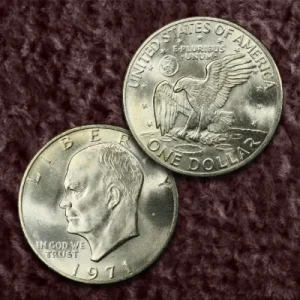
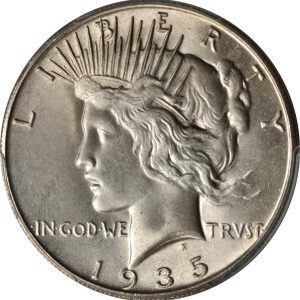
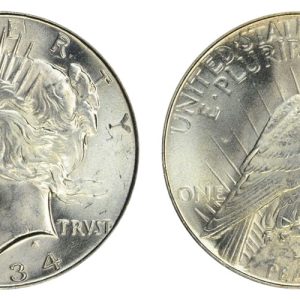
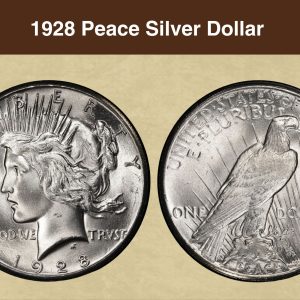
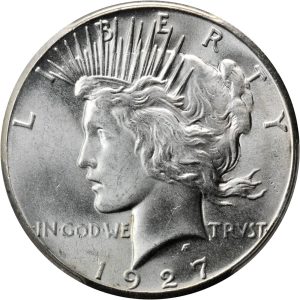
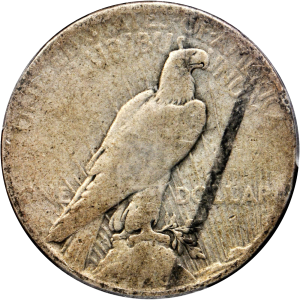
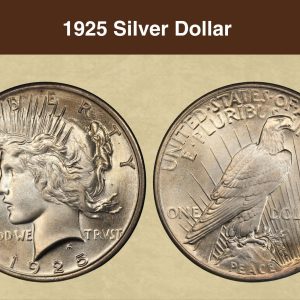
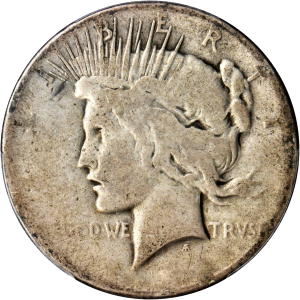
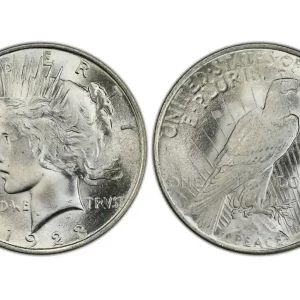
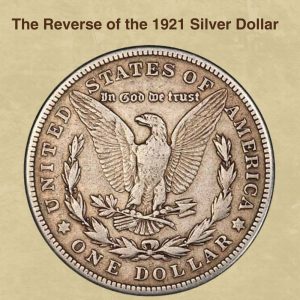
How much is a 1922 silver dollar worth with no mint mark?
Circulated condition: Most 1922 Peace Dollars are common and sell for approximately $15 to $50 in circulated to near-mint condition, with some examples in the $30-$40 range for typical circulated coins. Uncirculated or Mint State (MS) condition: The value increases dramatically as the coin’s condition improves. Mint State coins in a lower grade (like MS-63) will command a modest premium. Higher grades, such as MS-65, can reach four-figure values, and very rare examples in top grades (MS-66 or…
What is the error on a 1922 silver dollar?
The 1922 Liberty Dollar, more formally known as the 1922 Peace Dollar, contains one of the most famous intentional misspellings in American coin history: the word “TRUST” appears as “TRVST.” This deliberate design choice—where the word TRUST on a 1922 Liberty Silver Dollar is misspelled—reflects sculptor Anthony de …
What makes a 1922 Peace Dollar rare no mint mark?
Another rare variant is the 1922 silver dollar with no mint mark which was actually produced in Denver. Typically, coins minted in Denver are marked with a “D.” However, a very small number of coins missed the mint mark process, making them rare and intriguing to collectors.
What is misspelled on a 1922 Liberty Silver Dollar Trust?
Intentional spelling: The “V” was used instead of “U” intentionally. Reason: The misspelling is a classic, Latin-style spelling meant to give the coin a timeless quality, honoring ancient Roman coins. Not an error: This is not an error but a standard feature of all 1922 (and other Peace dollar) silver dollars, reports JustAnswer.